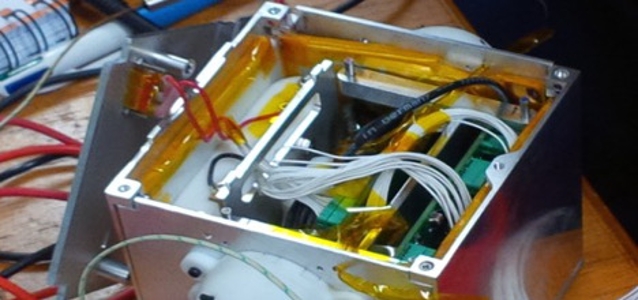
© rs components
Components |
RS Components supports Warwick University space mission
RS Components is aiding the space mission of students at Warwick University through a sponsorship of the development of a nano-satellite set to be launched into space this month.
In a bilateral agency agreement between the German Aerospace Center (DLR) and the Swedish National Space Board (SNSB), the REXUS programme was realised, and the Warwick University Satellite Team (WUSAT) was selected to be given pay-load space on the rocket under this programme back in 2013. They have been working since this time on a CubeSat code named WUSAT 2, a cubic nano-satellite of 0.1m wide with a mass of less than 1.33kg.
Nano-satellites were developed for use in space exploration and science by academics worldwide, and are a fraction of the price of a traditional satellite. WUSAT 2 is due to launch on the REXUS rocket from Sweden on 17th March. Travelling to an altitude of 100km at its height, a light-spectrometer free falling probe is released to descend back to Earth to allow monitoring and recording of light frequencies of elements to help create a density map of element types against differing altitude levels.
RS Components has supported the mission with donation of equipment and products to help in the development of WUSAT 2 – such as ‘Easy’ radio modules – a key component in the satellite’s radio transmission system - electronic components used for prototyping, testing and building the printed circuits and communications systems for WUSAT-2. RS has also donated heavy duty cases to ensure the safe transportation of WUSAT 2 to events.
Dr William. E. Crofts Director of Warwick Satellite Programme at Warwick University said: “This is the ninth year of operation for our satellite team. We began with no knowledge of satellite technology and no laboratory to work in. However, through dogged persistence we have kept the team going through six years of designing the electrical power sub-system for ESA’s moon orbiting satellite (ESMO), and now three years of designing/building our own satellites.



